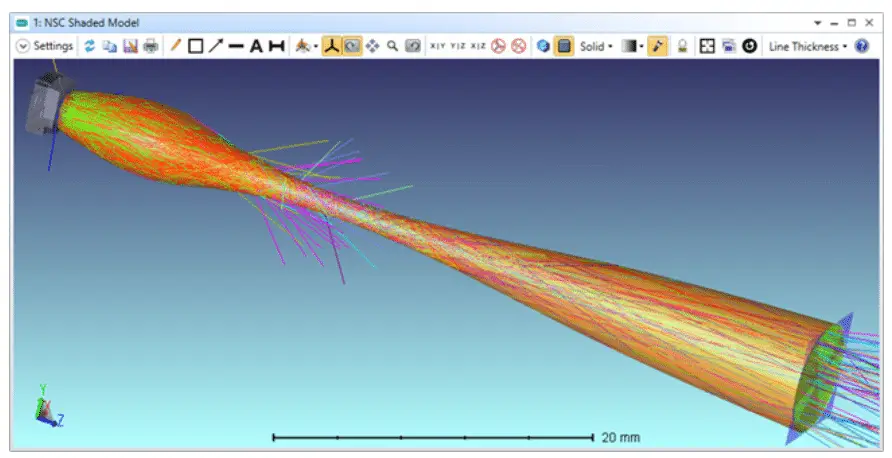Tolerancing is the process by which errors (manufacturing, assembly, material, etc.) are systematically introduced to an optical system in order to determine their effect on system performance.
Here are some additional points to note about non-sequential tolerancing:
- Compensator min/max bounds are always ignored because merit function and user script are the only available criteria. Use merit function boundary operands (NPGT, NPLT, etc.) to constrain compensator values.
- TOLR is supported during optimization in Non-Sequential Mode, however user script is the only valid criteria; selecting merit function as the criteria would lead to an infinite loop. Make sure the merit functions loaded by the script don’t contain TOLR operands themselves.
- Tolerance settings that have no meaning in non-sequential systems (ray aiming, separate fields/configs, etc.) are disabled.
- When tolerancing multi-configuration systems, the merit function used must account for each configuration using multiple CONF operands.
As an example, we will use the optimized freeform-z lightpipe. The optimized system consists of an OSRAM LED and a freeform lightpipe that has been optimized to achieve maximum power and collimation at the detector.
- Manufacturing errors
- Incorrect lateral sag at the control points
- Incorrect overall thickness
- Incorrect index of refraction
- Assembly errors
- LED position and orientation
- Detector position and orientation
If a user script had been used, we could have reported any desired merit function operand values directly in the tolerance report. This is a very useful feature when specific values need to be monitored during the tolerance process.
Reference Source:
- https://www.zemax.com/
- Zemax Optical Design Program User’s Guide, Zemax Development Corporation




